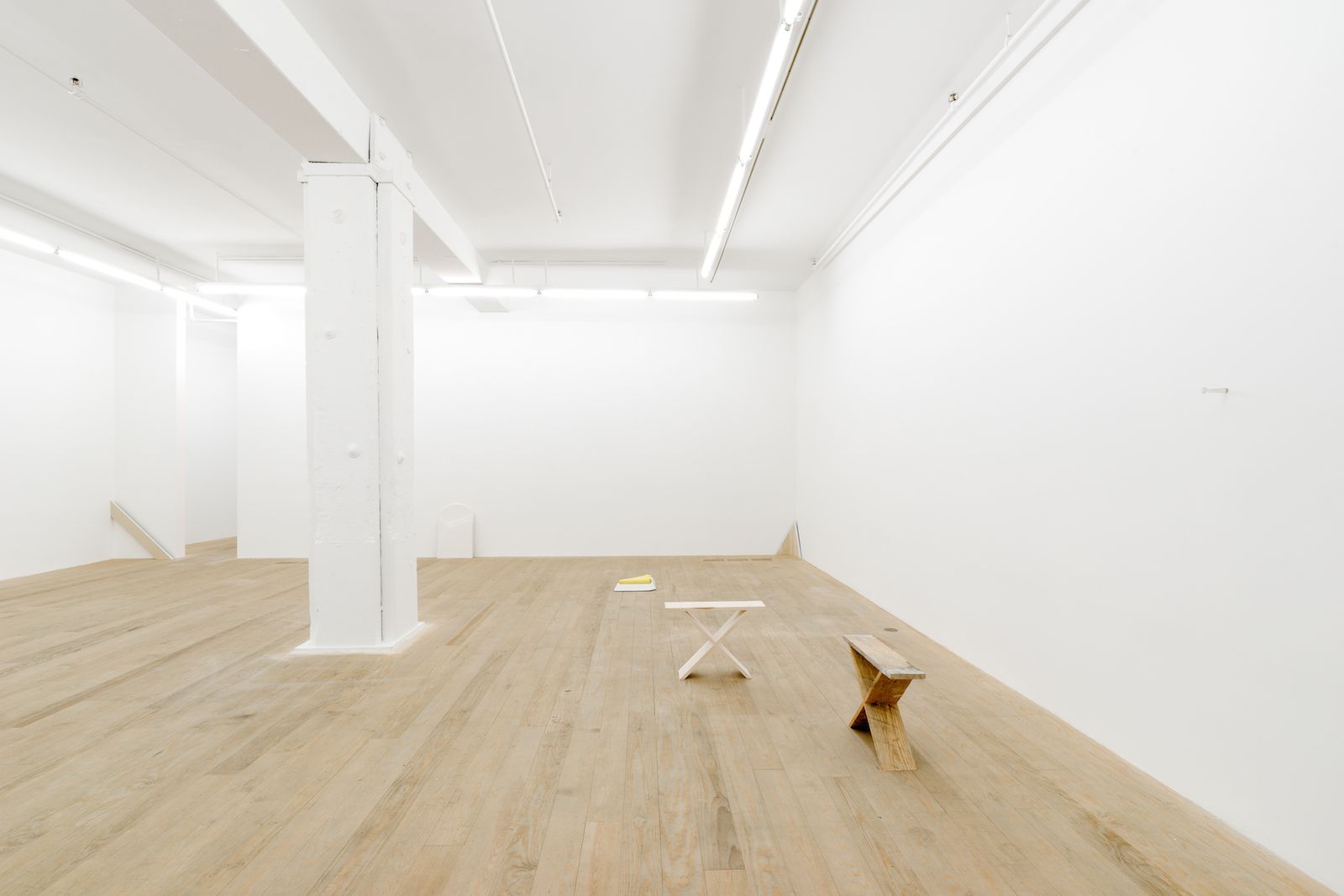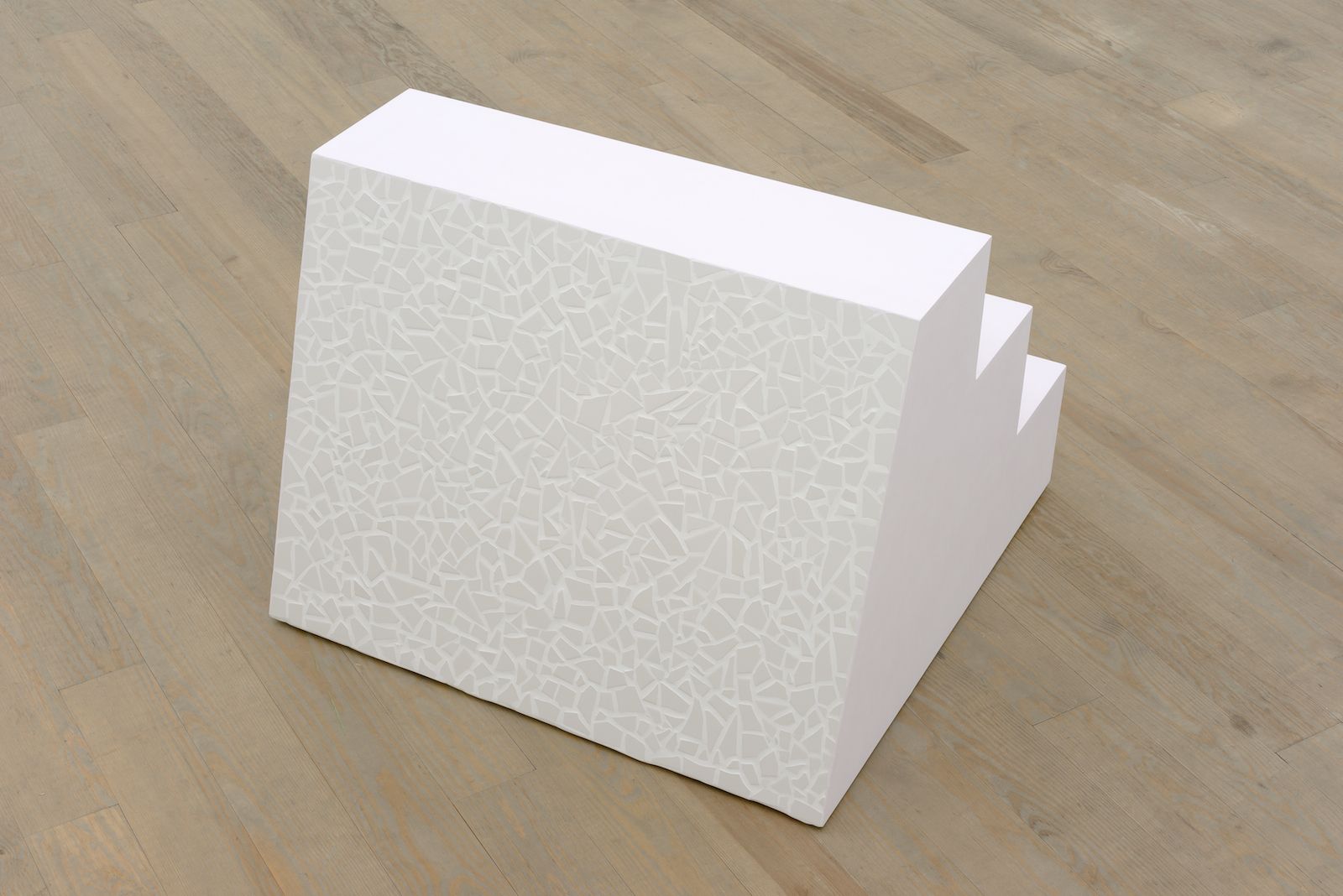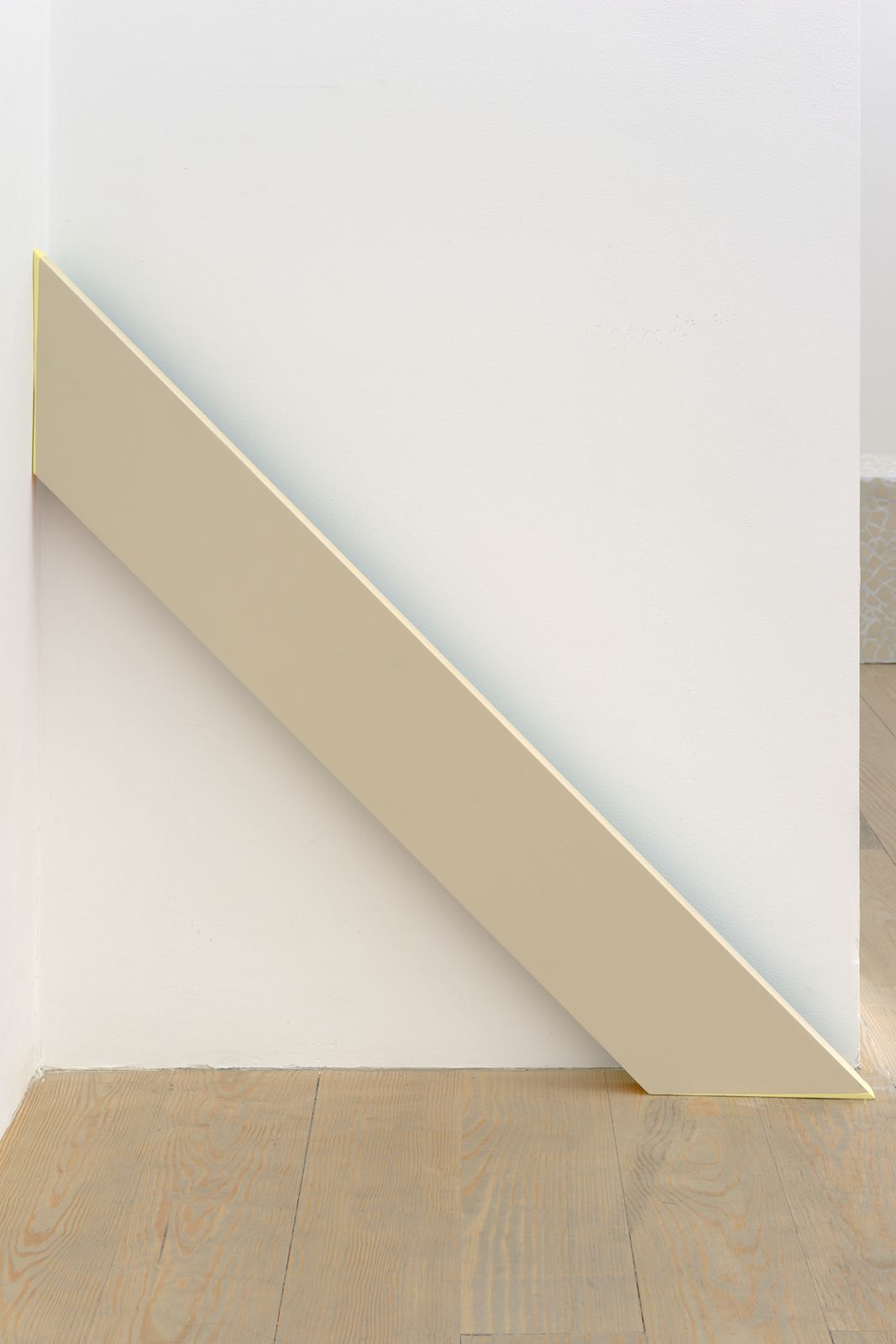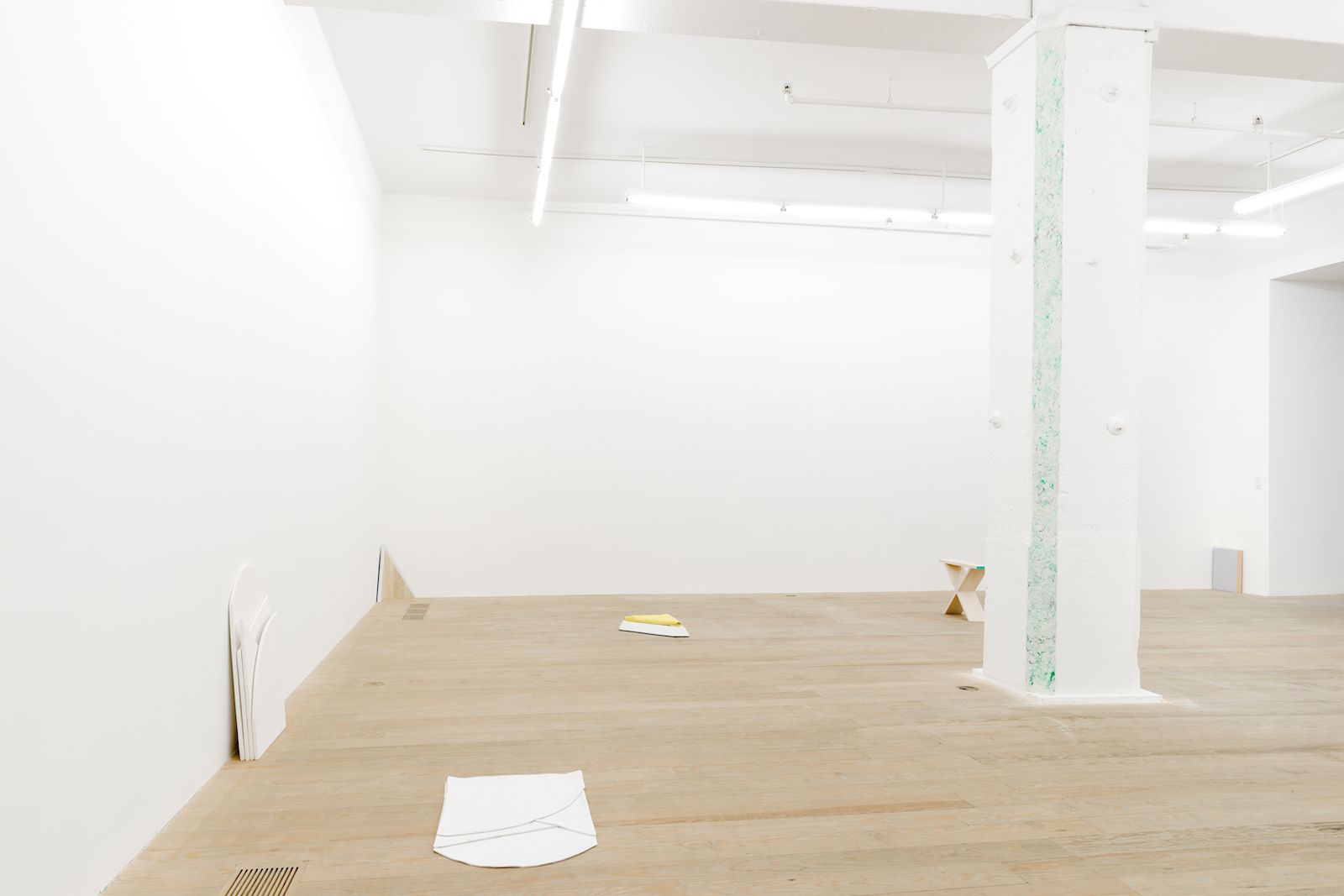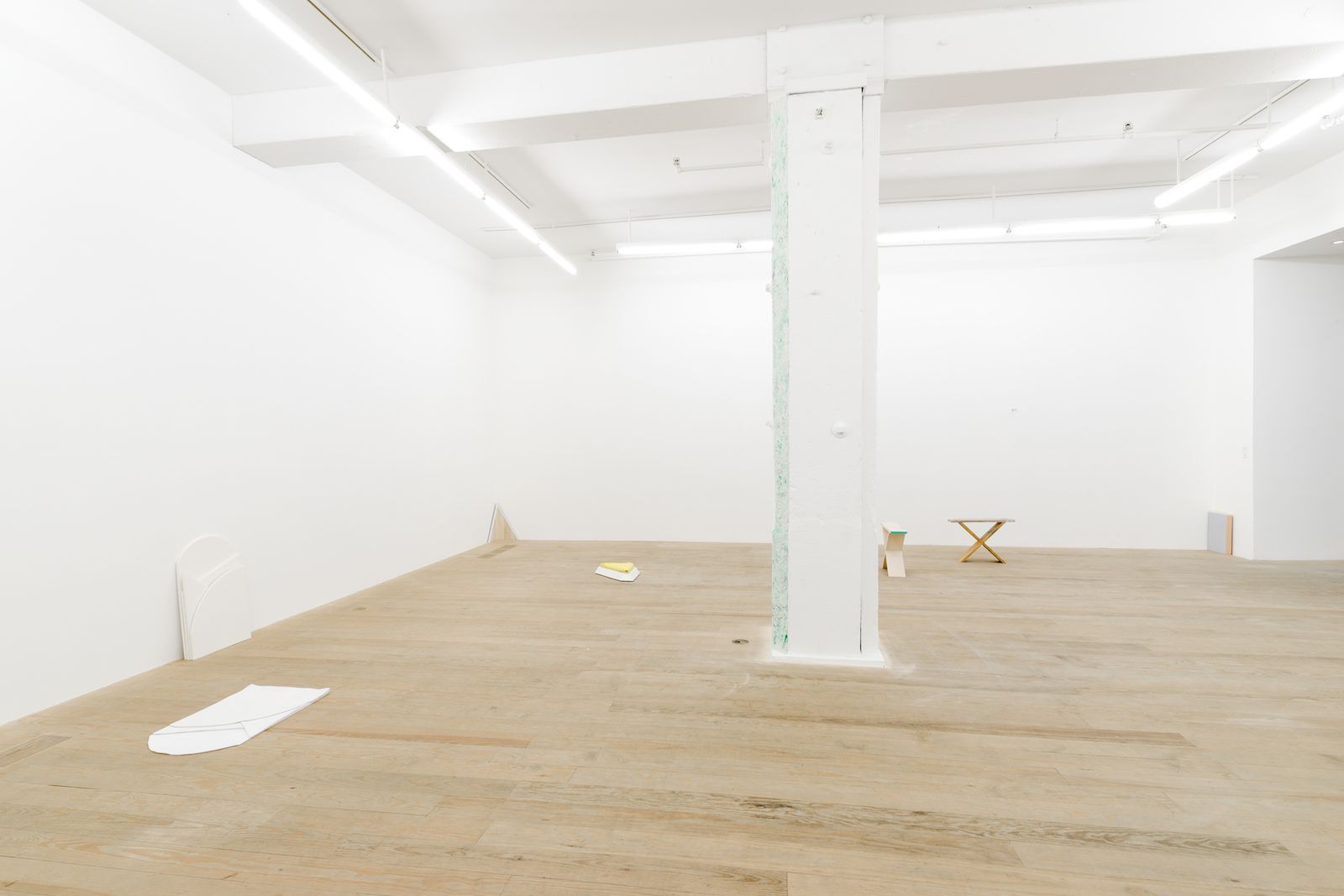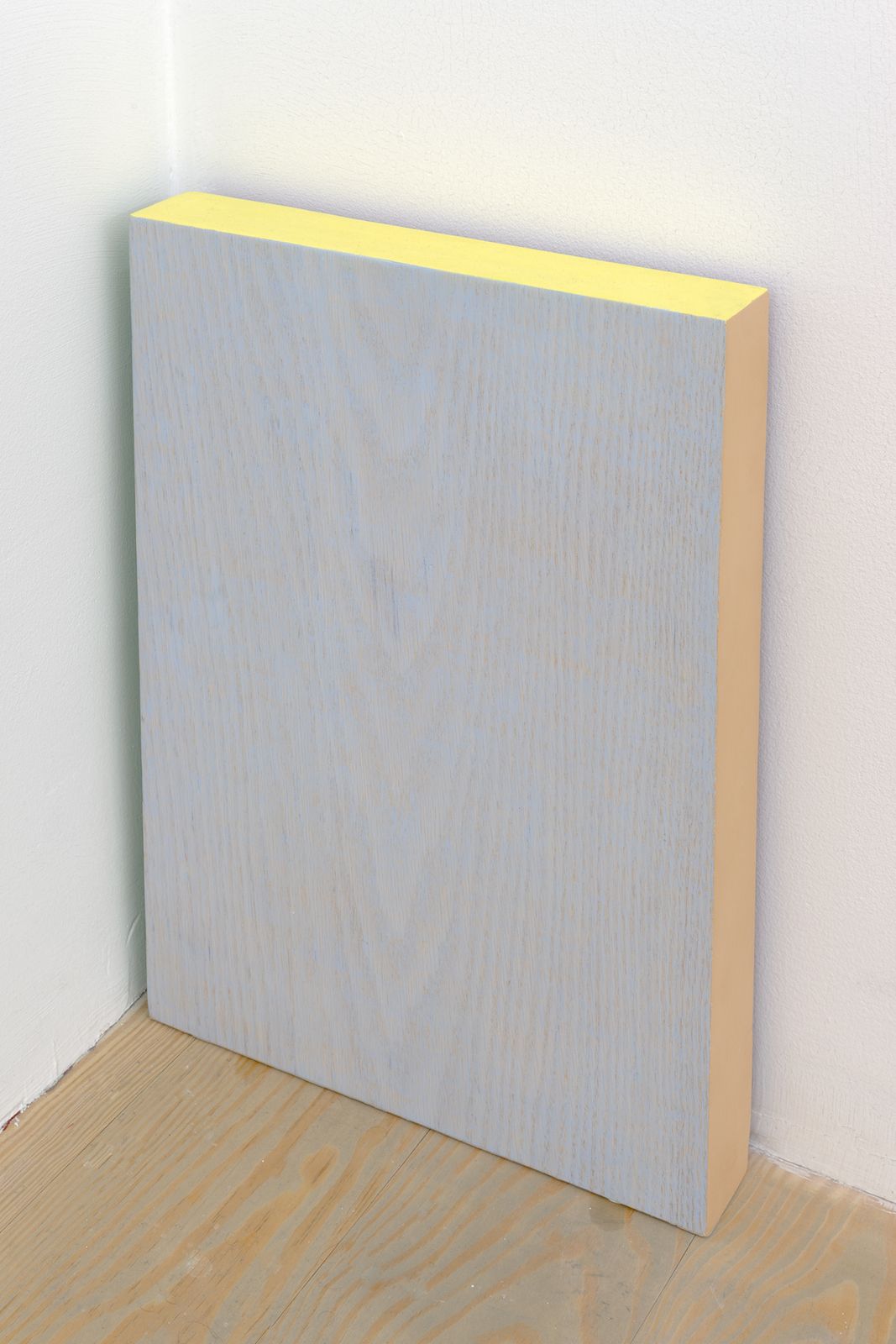NEVER ODD OR EVEN, Gordon Hall’s inaugural solo exhibition in New York, applies an unconventional logic to the language of abstraction. Hall’s palindromic title points to the artist’s interest in a cycle of readings, back and forth as it were, and in objects (here letters) as both things in themselves and as transmitters of meaning. The exhibition explores precision and subtle difference, and the ambiguity that can lie between or within objects. The exhibition highlights relations between bodies and objects both in terms of the artist’s use of their body in producing the work, and of the perceptions of the viewer within the space: how objects conjure spatial relations, embedded memories, color perceptions, or potential actions.
NEVER ODD OR EVEN casts familiar forms in understated, hybrid colors. The works share a sense of utility: they suggest a potential function, whether it be to sit on, to hang something upon, or to memorialize. Many have a pair that is an echo, rather than a double, often made from another material or having a different shape. Mysterious yet precise actions and objects inhabit the white cubed gallery space: hidden surfaces emit colors, wall sections are painted in just perceptible off-whites, and soft clay is pressed into a column.
STAIR is a section of a wooden stair with an oblique-angled, mosaic back. White with a purple undertone, the front section has a smooth, luminous surface made from pigmented joint compound. The work’s odd shape and mix of materials give it an ethereal, almost surreal quality.
MIDDLE (I) & (III) are wall sections in entranceways that have been painted in pastel off-whites, where the artist interjects ever so slight color variations into the viewer’s experience of the gallery space.
MIDDLE (II) comprises never-dry modeling clay attached floor-to-ceiling along the crevice of the back of a structural column. The cream, gray, and green clay fills in, smoothes over, and aestheticizes an overlooked architectural feature.
DOUBLE (II) are two Shaker pegs cast in translucent resin. Installed on opposite walls of the gallery, their apparent functionality is undermined by their material and context.
SET (IV), (V), & (VI) – three painted wooden floor pieces with joint compound surfaced edges – are placed in different corners of the gallery, spanning the space of the exhibition between them. They have hidden colored sides that indirectly reflect onto the white gallery walls, making, in a sense, the unseen visible.
DOUBLE III (STAND AND) comprises two flat arrangements of shapes made respectively of joint compound-covered wood and hand-dyed cotton (that are miniature versions of another work concurrently on view two blocks away at Kent Fine Art.) With the wood sections stacked against a wall and the cotton pieces lying on the floor, they share the same shape, color, and size, yet their materials distinctly mark their difference.
FOLD – a triangle of folded, dyed canvas on a low, customized plinth – suggests a shroud or a flag left ceremonially in its final resting place.
DOUBLE (I) comprises an old wooden stool (found at an artist’s residency) placed near a replica of it. The artist honors the original through making its copy; although, they actually look quite different: the original is well-worn through use, while the copy has colored edges and a shiny newness about it.
STOOLS, two mosaic stools are placed opposite one another as if in communion. Their surfaces – off-white grouting with beige tiles on the outside, yellow tiles on the inside, and (unseen to the casual viewer) mirror tiles on the underside – are the same, but they are shaped differently: one is rectangular and smaller; the other is curved and larger.
CREDITS
Photography: Mark Woods. Thanks to Night Club, Chicago.
